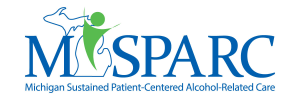Options for People Who are Thinking About Their Drinking
Decision Aid Booklet Overview for Providers
The purpose of the decision aid is to help patients who may be drinking at a level of concern decide whether they want to:
- Cut down
- Stop
- Make no changes at this time
For patients who are considering changing their drinking, the decision aid provides information on 5 types of treatments that help patients:
- Counseling
- Peer support
- Medications
- Changing on their own
- Group-based treatment
